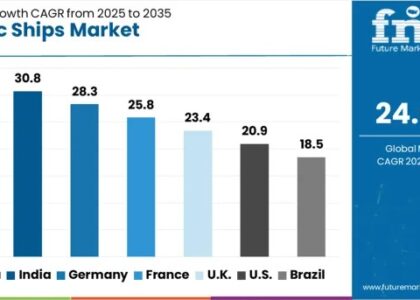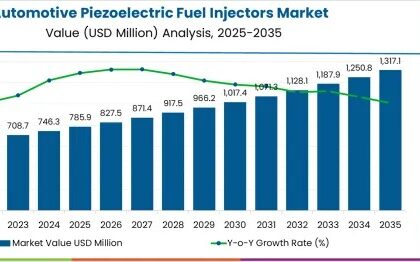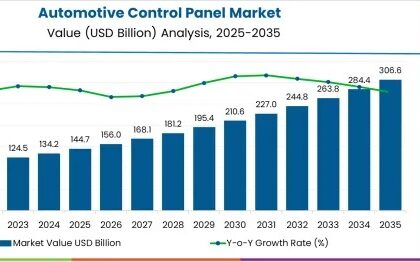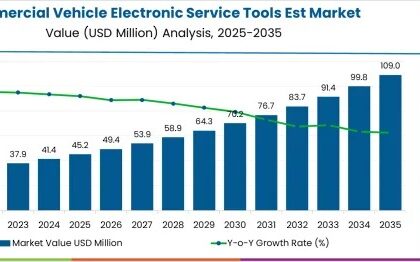Automotive night vision sensors are essential when driving in the dark or in the shade (night). Automotive night vision sensors support and enhance the drivers’ and passengers’ nighttime perception and field of view. The night vision devices or systems, which generally refer to electronically enhanced optical devices or systems that work in three modes: thermal imaging, image enhancement, and active illumination, utilise these automotive night vision sensors.
Through the use of head-up displays, infrared lights, thermographic cameras, and other technologies, automotive night vision sensors systems essentially extend the driver’s field of vision beyond the range of the headlights. Assisting and alerting drivers to potential threats before they become evident, automotive night vision sensors systems can help avoid accidents.
Request Sample Report:
https://www.futuremarketinsights.com/reports/sample/rep-gb-7669
Automotive Night Vision Sensors Market: Dynamics
The main factor behind the growth of the Automotive Night Vision Sensors market is the rising demand for ADAS from end-users which may be owing to the ongoing trend of using the latest technology. The Automotive Night Vision Sensors manufacture in the automotive industry are actively involved in the continuous development of the night vision sensors system to increase its range and effectiveness which is also expected to support the growth of the Automotive Night Vision Sensors market over the forecast period. Also, raising awareness among the population about the key safety features of the Automotive Night Vision Sensors is also a factor expected to encourage Automotive Night Vision Sensors adoption globally.
Apart from this, Automotive Night Vision Sensors have become an integral part for all premium class vehicle in many countries across the globe so the increase in demand for premium vehicles will also add up to the growth of the global Automotive Night Vision Sensors market.
However, the high cost of advanced technology such as Automotive Night Vision Sensors system and low awareness is anticipated to restrain the growth of the global Automotive Night Vision Sensors market. However, the current trend to use new and better technology for better results will increase the demand for global Automotive Night Vision Sensors market over the forecast period.
Request for Reports TOC:
https://www.futuremarketinsights.com/toc/rep-gb-7669
Automotive Night Vision Sensors Market: Market Participants
Some of the examples of the market participants operating across the value chain of the global Automotive Night Vision Sensors market are:
BrightWay Vision Ltd.,
Robert Bosch GmbH
Continental AG
Hella KGaA Hueck & Co.
Denso Corporation
Autoliv, Inc.
Aisin Seiki Co., Ltd
Delphi Automotive PLC
Valeo S.A.
FLIR Systems
Daimler AG
Automotive Night Vision Sensors Market: Segmentation
Based on the sales channel, the Automotive Night Vision Sensors market can be segmented as follows:
Original Equipment Manufacturer (OEM)
Aftermarket
Based on system type, the Automotive Night Vision Sensors market can be segmentedas follows:
Active systems
Passive systems
Based on the vehicle type, the Automotive Night Vision Sensors market can be segmentedas follows:
Passenger cars
Compact
Mid-Size
Luxury
Premium
SUV
Light Commercial Vehicles(LCV)
Heavy Commercial Vehicles(HCV)
Ask the Analyst:
https://www.futuremarketinsights.com/ask-question/rep-gb-7669
Automotive Night Vision Sensors Market: Regional Outlook
Europe, followed by North America holds a significant share in the global Automotive Night Vision Sensors market, owing to the presence of prominent original equipment manufacturer (OEM) of the automobile in the region. The market of Automotive Night Vision Sensors in Europe and North America will have a higher installation rate owing to higher demand for premium and luxury cars, car accessories and car modifications, while this may not be the case in Asia Pacific region, as customers in the Asia Pacific market usually opt for low-end cars with basic features.
Nevertheless, the Automotive Night Vision Sensors market perspective in the Asia Pacific region is expected to grow at a slower pace in the first half of the forecast period eventually grow significantly after that. The Automotive Night Vision Sensors market in MEA regions will depend on the performance and adoption of Automotive Night Vision Sensors. Rest of the world is estimated to account for a relatively small share of the Automotive Night Vision Sensors market.
About Future Market Insights (FMI)
Future Market Insights (ESOMAR certified market research organization and a member of Greater New York Chamber of Commerce) provides in-depth insights into governing factors elevating the demand in the market. It discloses opportunities that will favor the market growth in various segments on the basis of Source, Application, Sales Channel and End Use over the next 10-years.
Contact:
Future Market Insights, Inc.
Christiana Corporate, 200 Continental Drive,
Suite 401, Newark, Delaware – 19713, USA
T: +1-845-579-5705
For Sales Enquiries: sales@futuremarketinsights.com
Browse All Reports: https://www.futuremarketinsights.com/reports
LinkedIn| Twitter| Blogs





